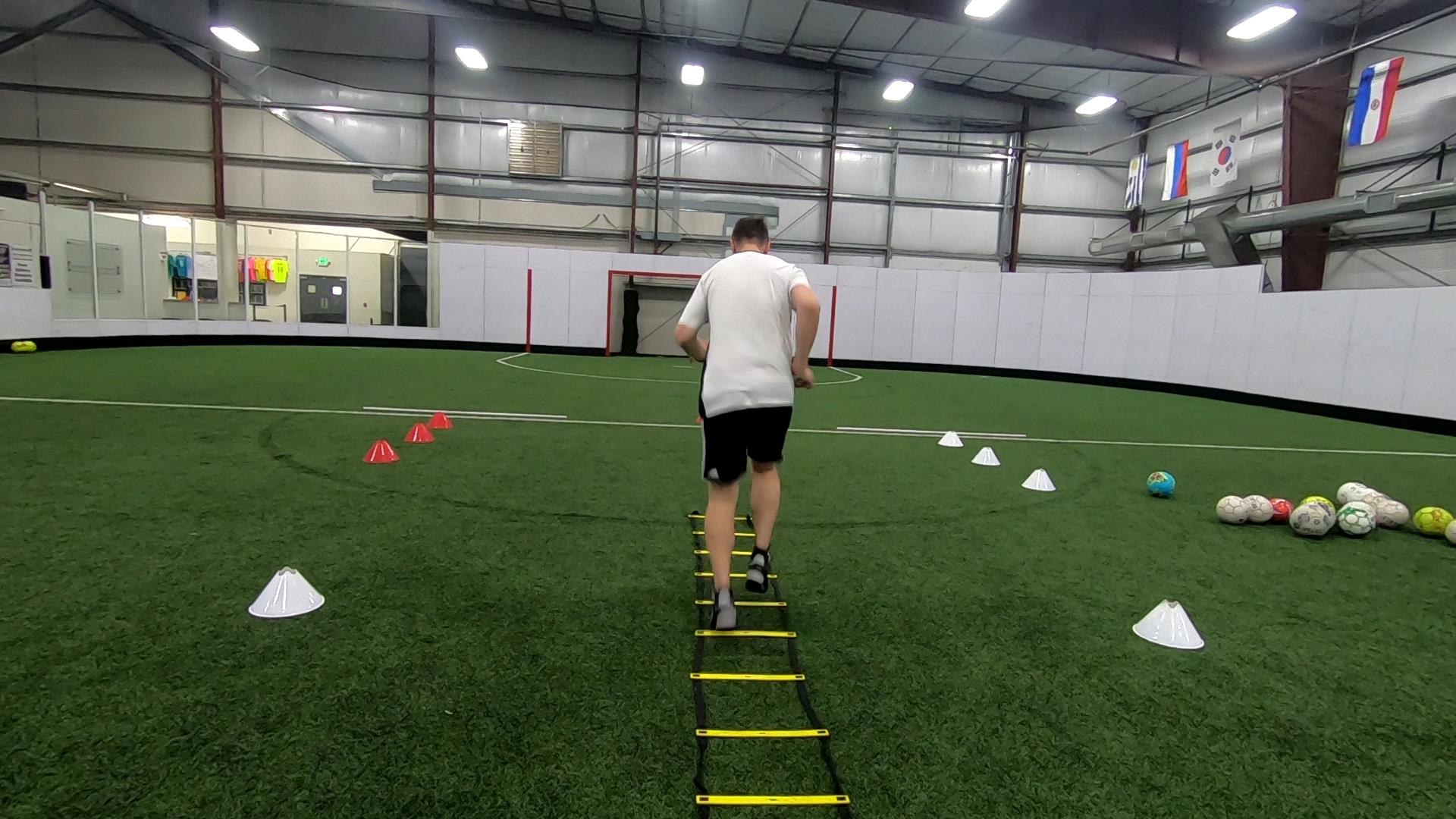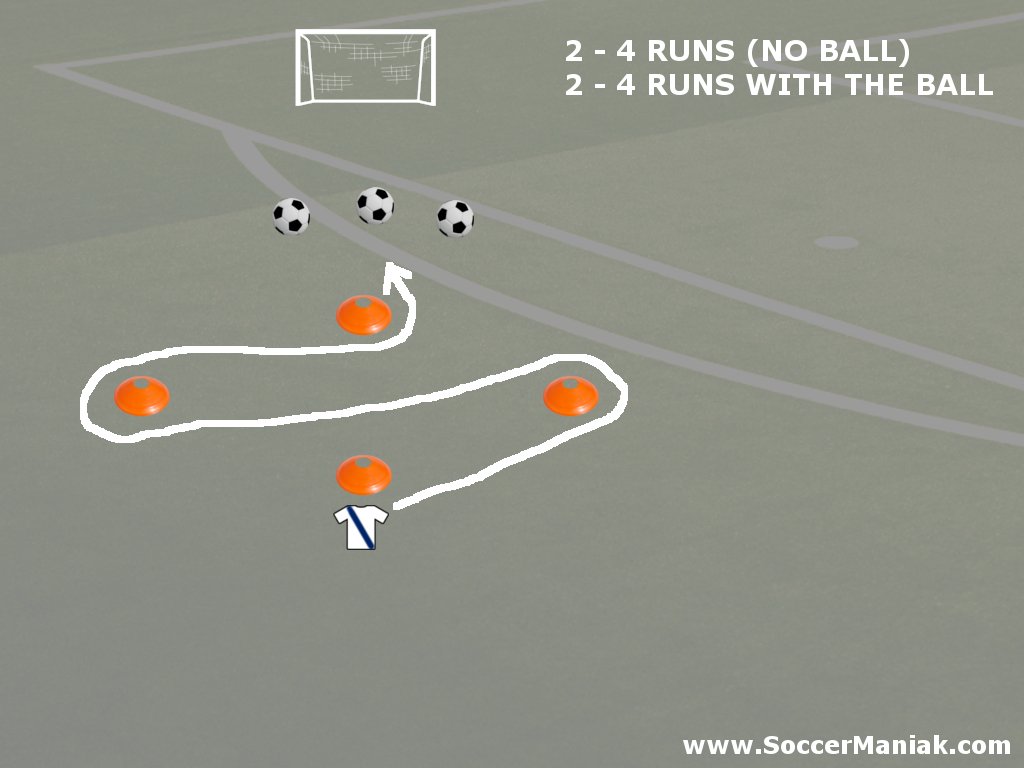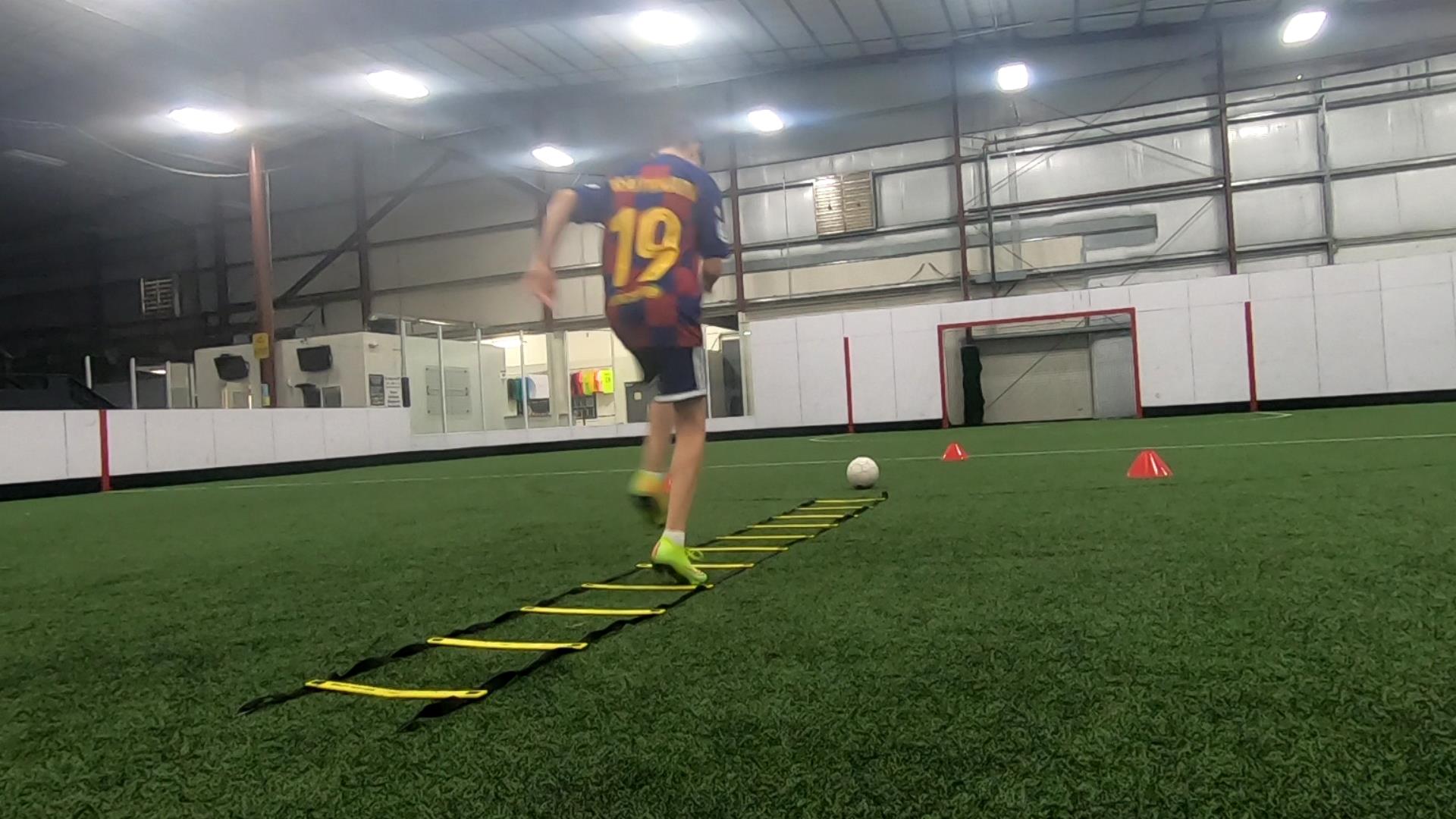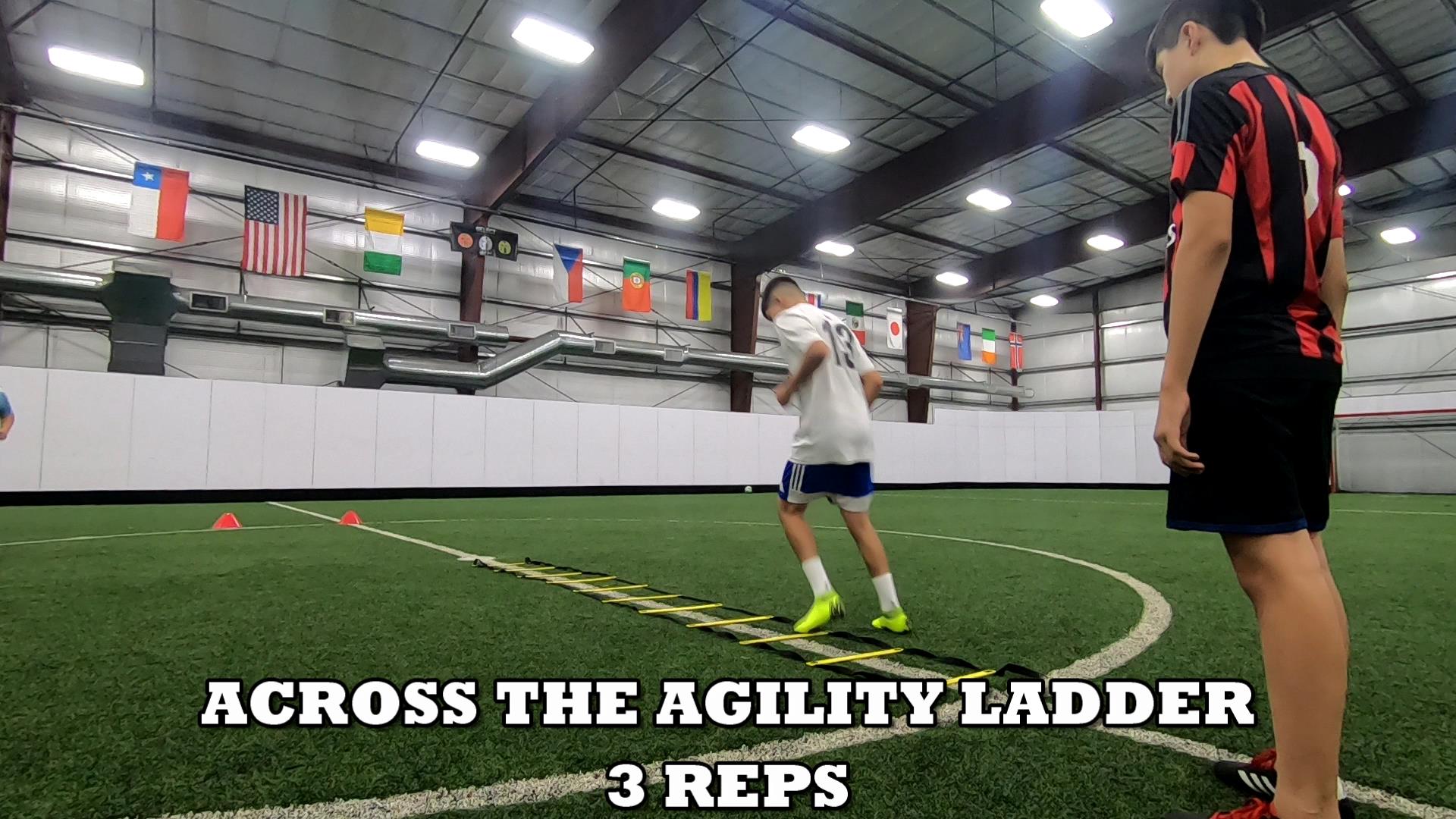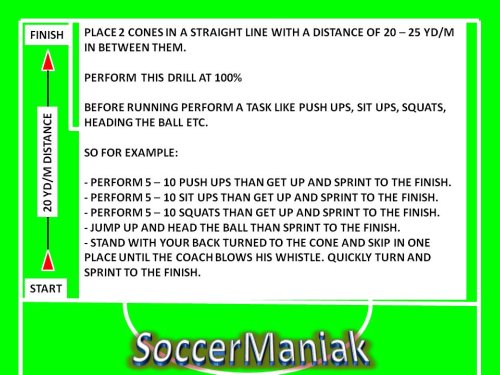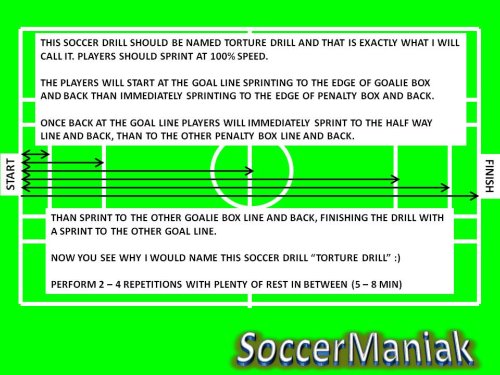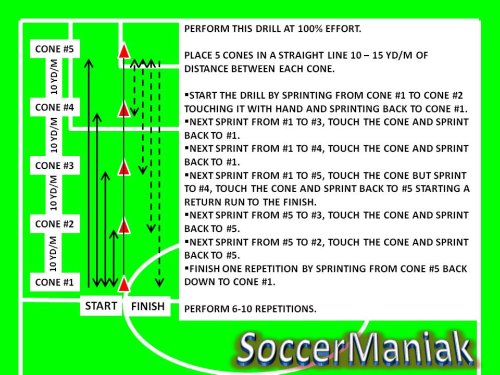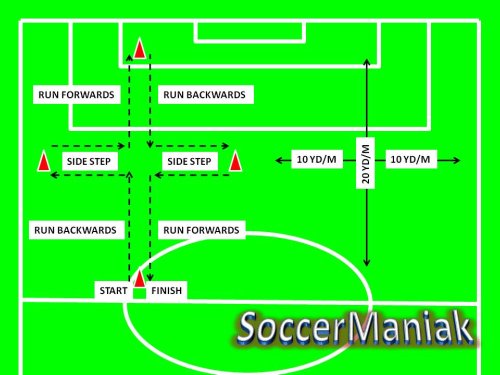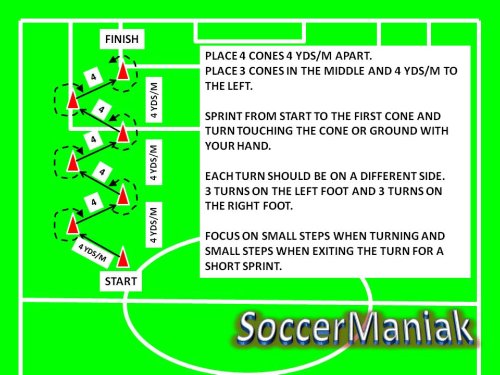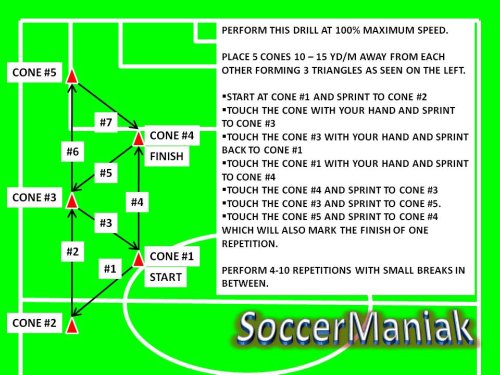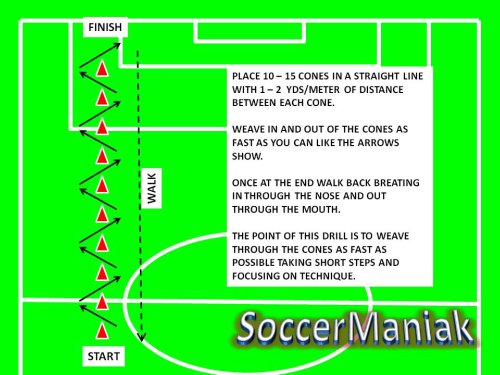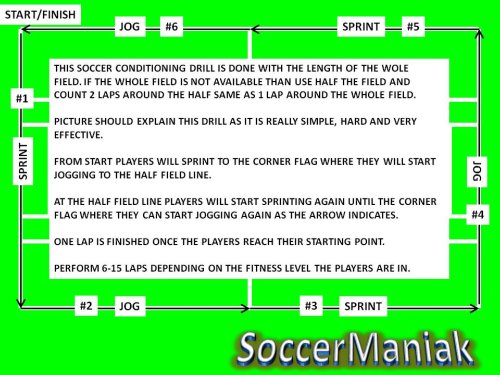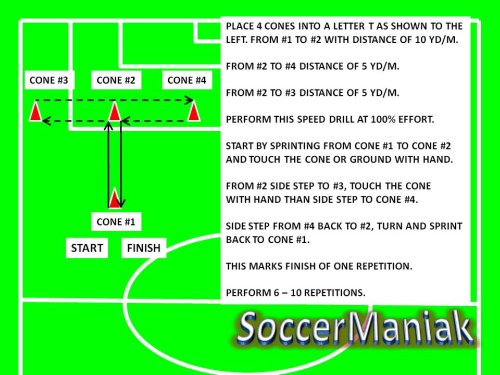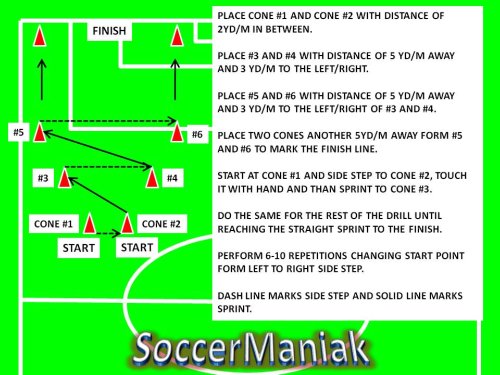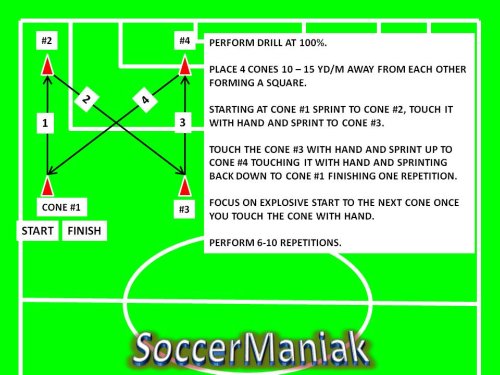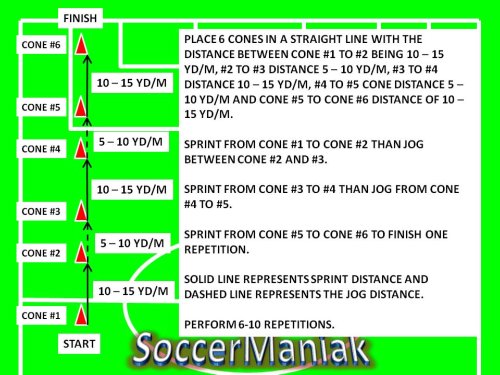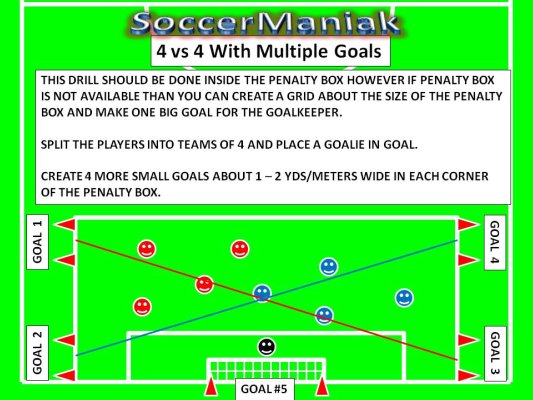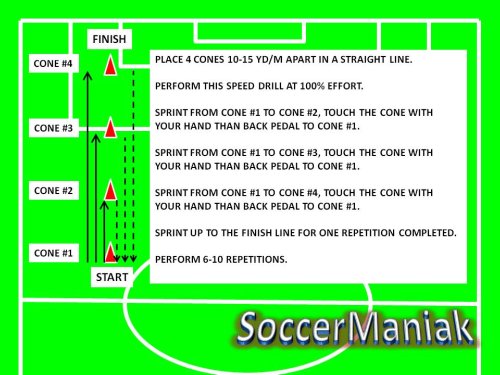Soccer Conditioning
with Strength Training

Soccer Conditioning
and Strength Training
Soccer conditioning drills with strength training using six cones and body weight.
Set up six cones in a rectangle shape and space them at least 10 meters/yards apart.
Players will do strength exercises followed by a sprint to the next cone. By the end of the grid, players should be doing two reps of each strength training exercise followed by a sprint to the next cone.
Get creative with the strength drills. Add a soccer ball to get more touches on the ball as players go through strength training drills.
In this soccer drill I use the following exercises.
- 8 Pushups
- 8 Sit-ups
- 8 Knee High Jumps
SOCCER CONDITIONING SET UP
- Place six cones to create a rectangle with 10 - 15 meters/yards of space between cones.
INSTRUCTIONS
- Start with 8 pushups at the first cone, followed with a sprint to the 2nd cone.
- At 2nd cone, do 8 sit-ups, and sprint to the 3rd cone.
- At 3rd cone, make 8 knee high jumps, and sprint across to the 4th cone.
- Repeat 8 pushups, and race to cone 5.
- At 5th cone, repeat 8 sit-ups, and sprint to cone 6.
- Finish with another 8 knee high jumps, and sprint to the FINISH line.
SOCCER CONDITIONING
AND STRENGTH VARIATIONS
This cone set up is easy to use and get creative with the types of runs done. The example above includes some strength training mixed with running. Same cone set up can be used towards suicide runs, or fast-paced rectangle runs. Get creative and make your own soccer training rules.
Soccer strength and conditioning workouts help players improve their strength and speed. I like to demonstrate soccer drills for young soccer players because visually seeing the exercise is better than a long explanation of what I'm asking the players to do.
This soccer drill is from my weekly Sunday soccer training sessions. Players use strength and sprint speed to build muscle and running speed while having fun and laughing to the finish line/cone.
Soccer conditioning and strength training drills are frowned upon by most soccer players, especially younger ones. Every young soccer player loves to play the game more than doing training drills. I always encourage players to learn to love the process. Hard work ethic in training leads to playing better in the future.
Use this soccer drill individually or make it a competition between players to see who will finish first.
Pushups, Situps, and Kneehigh Jumps can be substituted with other strength-building exercises to add resistance training before running.
Players can also control the soccer ball instead of sprinting without the soccer ball.
Switch up repetitions to 1 individual run, 1 competitive run, and 1 run with the soccer ball.
When they go individually, timing players is a great way to add pressure and increase work ethic for the drills.
Soccer Conditioning Drills
with Soccer Ball
- (00:00) 2 Short Touches, 1 Long Touch (Free Form)
- (00:51) 2 Short Touches, 1 Long Touch (Right Foot)
- (01:31) 2 Short Touches, 1 Long Touch (Left Foot)
- (02:01) 2 Short Touches, 1 Long Touch (Instep Touch)
- (02:29) 2 Short Touches, 1 Long Touch (Laces Touch)
- (02:51) 2 Short Touches, 1 Long Touch (Race Competition)
- (03:55) Run the Grid (No Ball)
- (05:01) Run the Grid with the Soccer Ball
This soccer conditioning drill is done with the soccer ball. Players use 2 short touches followed by 1 longer touch and explosive speed after the soccer ball.
Boys will tend to touch the ball the same and need encouragement to change their touches from 2 short controlled touches into 1 longer more explosive touch to get into space.
My training sessions are indoors so the players can use the wall to add a pass and turn to this training drill. When done outdoors, I would still create a grid about 20 meters/yards long so the players can turn with the ball as they repeatedly go 3 times.
SOCCER CONDITIONING WITH BALL SET UP
- Set up by placing 4 cones into a square or rectangle depending on how many players are doing the drill.
- Length should be 20 meters/yards of open space.
CONDITIONING with BALL INSTRUCTIONS
- Use 2 short touches, followed by 1 long touch with explosive speed after the soccer ball.
- Turn with the ball and repeat back to the starting point.
- Repeat 3 times back and forth for one completed repetition.
VARIATIONS
- Limit touches to Right Foot Only, Left Foot Only, Free, Instep, Laces etc...
- Leave the ball to the side and turn the grid into a running exercise to get more soccer conditioning done.
Soccer conditioning plays a significant role in every soccer player's game. It doesn't matter how talented or quick the player is.
One of the most critical parts, for any soccer players game, is the ability to withstand constant running, and changes of speed and direction to occupy free space on the field. You have to be in top shape, achieved only with conditioning drills for soccer. Conditioning drills lead to quickness, agility, and speed with or without the soccer ball.
Conditioning soccer training is a crucial part of the game today because of all the research and technology that has allowed us to learn new and better ways to get into the best shape.
Conditioning drills are discomforting and can feel like torture, but hard work in training brings results on the field when it matters the most.
Conditioning for soccer will bring the players down on their knees, at times hating the training sessions, but later thanking the Coaches when they get out on the field, and play soccer at the level that only fit players can play.
Players need to be encouraged and pushed at times. Time spent running in training will reward players with a fit and able body later.
Soccer training for fitness is disliked by many players, especially at a young age, because all they want to do is play the game and scrimmage.
Conditioning for soccer has delayed gratification, and even though training may be hard, and disliked by many players, this type of soccer training is advantageous later in the game. Fit players won't tire quickly and will be able to go the full length of the game at a similar pace they started.
Regular soccer game is 90 min long, and the game is often decided in the final 20 min of the game. Team with better soccer conditioning is usually the one that comes out a winner.
No player has ever drowned in sweat, so pushing the players and encouraging them to push themselves is the best way to apply soccer conditioning training.
Our bodies are complex, and getting over the I CAN'T mentality is the key to seeing what our body is truly capable of.
The most important part of soccer conditioning training is the final run, or that final sprint, due to our body creating resistance points, and the more we push, the further these resistance points move.
Just think of it as a temporary discomfort with delayed gratification that greatly pays off later on the field.
Soccer Conditioning Drills
2 Soccer Agility Ladder Drills to improve players' coordination, agility, speed, and body form technique through repeated exercises using the speed ladder.
Soccer Conditioning Drills with Strength Training and Touches on the Soccer Ball to improve fitness, strength, and touches with the ball.
3 Soccer Agility Drills set up for training agility, speed, fitness, coordination, and adding the soccer ball to include more touches in training.
Agility Drills for Soccer with Cones are done in 2 - 3 reps for each footwork drill through the speed ladder. Focus on technique and footwork instead of speed.
8 Agility Ladder Drills, also called speed ladder drills, are an essential part of soccer training to help develop and improve the player's agility, speed, coordination, and footwork.
Speed Training for Soccer is tough, and some players don't see the benefit of doing all the running in practice.
